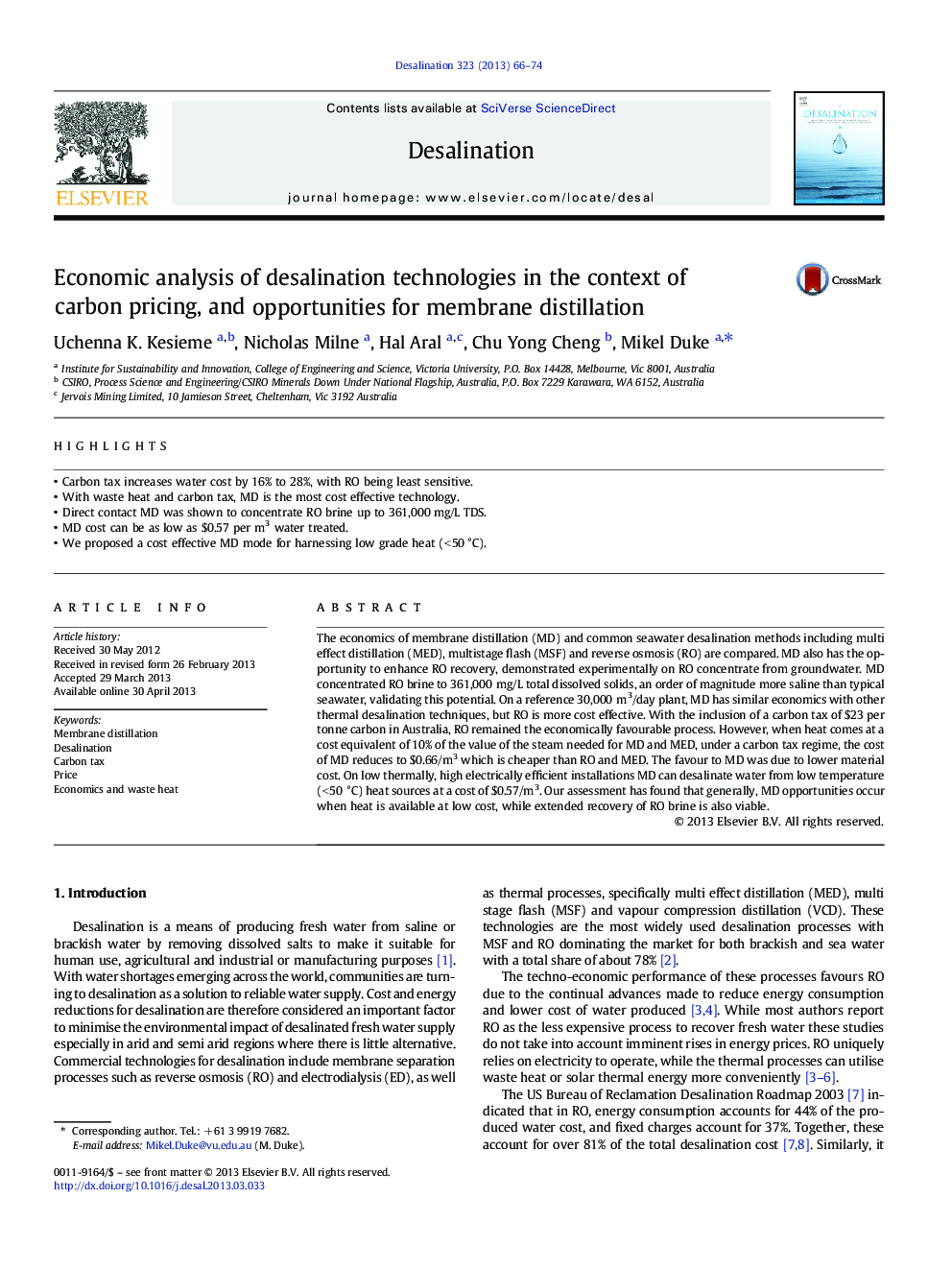| Article ID | Journal | Published Year | Pages | File Type |
|---|---|---|---|---|
| 623778 | Desalination | 2013 | 9 Pages |
•Carbon tax increases water cost by 16% to 28%, with RO being least sensitive.•With waste heat and carbon tax, MD is the most cost effective technology.•Direct contact MD was shown to concentrate RO brine up to 361,000 mg/L TDS.•MD cost can be as low as $0.57 per m3 water treated.•We proposed a cost effective MD mode for harnessing low grade heat (< 50 °C).
The economics of membrane distillation (MD) and common seawater desalination methods including multi effect distillation (MED), multistage flash (MSF) and reverse osmosis (RO) are compared. MD also has the opportunity to enhance RO recovery, demonstrated experimentally on RO concentrate from groundwater. MD concentrated RO brine to 361,000 mg/L total dissolved solids, an order of magnitude more saline than typical seawater, validating this potential. On a reference 30,000 m3/day plant, MD has similar economics with other thermal desalination techniques, but RO is more cost effective. With the inclusion of a carbon tax of $23 per tonne carbon in Australia, RO remained the economically favourable process. However, when heat comes at a cost equivalent of 10% of the value of the steam needed for MD and MED, under a carbon tax regime, the cost of MD reduces to $0.66/m3 which is cheaper than RO and MED. The favour to MD was due to lower material cost. On low thermally, high electrically efficient installations MD can desalinate water from low temperature (< 50 °C) heat sources at a cost of $0.57/m3. Our assessment has found that generally, MD opportunities occur when heat is available at low cost, while extended recovery of RO brine is also viable.
